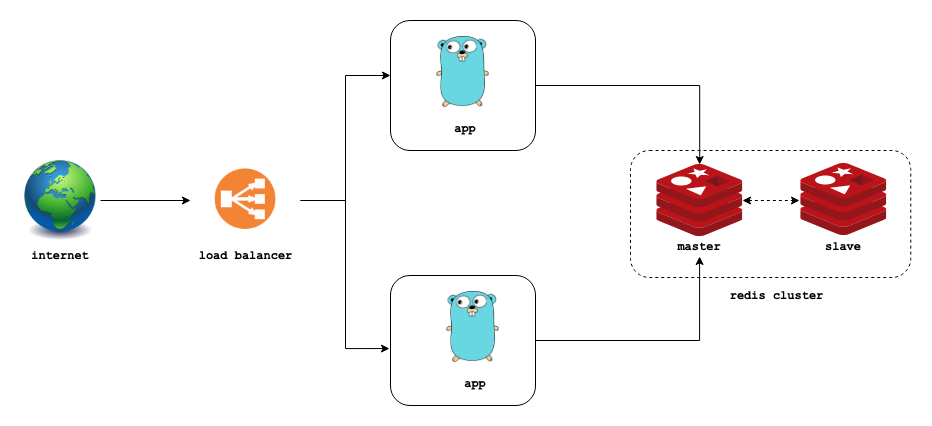In my previous post, I wrote a go application that displays the GPS location of any IP address. Here in this post, I’ll explain how to deploy the same in minikube.
Prerequisites
- understanding of kubernetes components (pods, deployment, etc.)
- minikube installed in your laptop
Kubernetes tutorial
If you are new to kubernetes and want to learn, I recommend this youtube playlist.
Minikube
Minikube is a tool that makes it easy to run Kubernetes locally. Minikube runs a single-node Kubernetes cluster inside a Virtual Machine (VM) on your laptop for users looking to try out Kubernetes or develop with it day-to-day.
_if you don’t have minikube installed in your laptop, you can do it by following the instructions _here.
Desired Deployment State
- 2 instances of our web application.
- **a load balancer **that balances the load on our two web application instances.
- a redis cluster with a master-slave replication.


desired deployment state
I’m going to list down 7 steps I did to get to the above shown desired state. I hope you can replicate what I did very easily in your own minikube environment.
Step 1: start minikube
minikube start
you should receive an output like this
MacBook-Pro-2:Desktop jeshocarmel$ minikube start
😄 minikube v1.12.3 on Darwin 10.14.3
✨ Using the hyperkit driver based on existing profile
👍 Starting control plane node minikube in cluster minikube
🏃 Updating the running hyperkit "minikube" VM ...
🐳 Preparing Kubernetes v1.18.3 on Docker 19.03.12 ...
🔎 Verifying Kubernetes components...
🌟 Enabled addons: default-storageclass, storage-provisioner
🏄 Done! kubectl is now configured to use "minikube"
To ensure minikube has started successfully, run the command below
minikube status
and you should receive an output like this.
#kubernetes #redis #golang #containers #minikube
